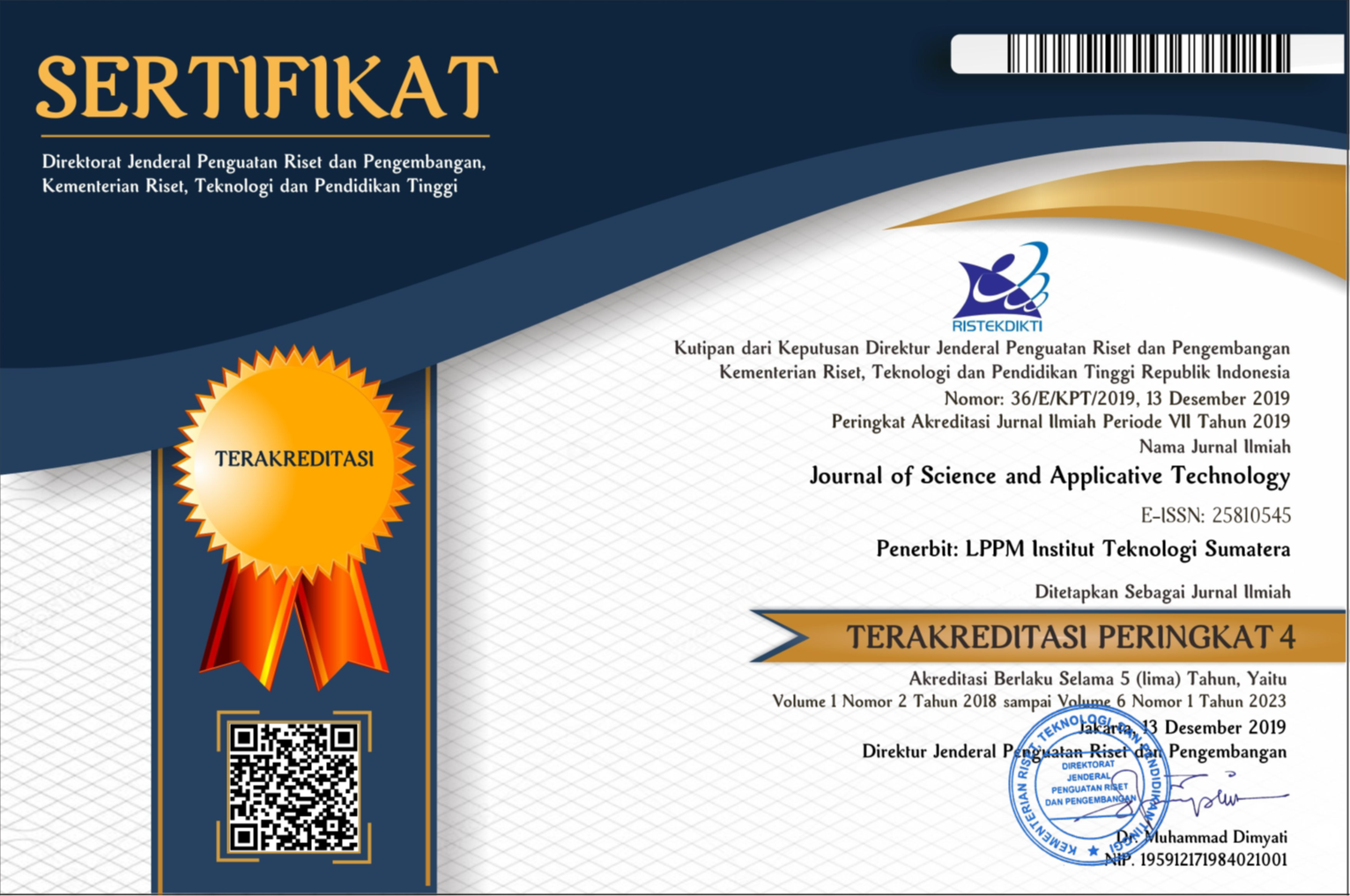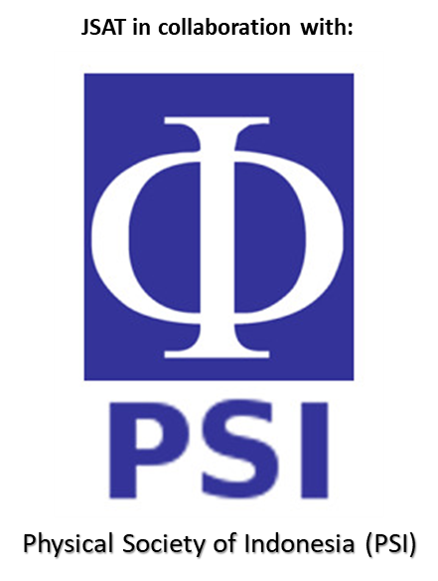First Record of Epizoic Diatom Presence on Poricellaria ratoniensis (Bryozoa, Cheilostomata) from Java Sea, Indonesia
Abstract
Indonesian waters cover a high diversity of marine organisms (micros- and macros-) of interest to scientists. Among this diversity, the neglected bryozoan had been scarcely reported due to lack of information from this area, especially on the epizoic diatoms since they are favorable as their dietary. This preliminary study aimed to investigate and witness the presence of epizoic diatom on bryozoan Poricellaria ratoniensis. Our data revealed an assemblage of diatoms attached to bryozoan surfaces and exhibiting taxonomic diversity. In total, members of five genera Amphora, Cocconeis, Neodetonia, Staurophora, and Thalassiosira were found, including the measurement of their cell size, respectively. The attached diatoms were mainly within the bryozoan operculum (op) range, functioning as feeding organs. However, further study is needed to understand the interaction between bryozoan and diatoms aiming for ecological services.
Downloads
References
[2] F.E. Round, R.M. Crawford & D.G. Mann The diatoms: biology and morphology of the genera, ix, 747p. Cambridge University Press, 1990. Price £125.00.’, Journal of the Marine Biological Association of the United Kingdom, vol. 70, no. 4, pp. 924–924, Nov. 1990, doi: 10.1017/S0025315400059245.
[3] H. U. Dahms, S. Dobretsov, and P. Y. Qian, ‘The effect of bacterial and diatom biofilms on the settlement of the bryozoan Bugula neritina’, J Exp Mar Biol Ecol, vol. 313, no. 1, pp. 191–209, Dec. 2004, doi: 10.1016/j.jembe.2004.08.005.
[4] G. Gerdes, N. Kadagies, J. Kaselowsky, A. Lauer, and J. Scholz, ‘Bryozoans and microbial communities of cool-temperate to subtropical latitudes - Paleoecological implications’, Facies, vol. 50, no. 3–4, pp. 363–389, Apr. 2005, doi: 10.1007/s10347-004-0037-2.
[5] C. Wuchter, J. Marquardt, and W. E. Krumbein, ‘The epizoic diatom community on four bryozoan species from Helgoland (German Bight, North Sea)’, Helgol Mar Res, vol. 57, no. 1, pp. 13–19, 2003, doi: 10.1007/s10152-002-0117-z.
[6] X. Zhou, J. Meng, Z. Yu, L. Miao, and C. Jin, ‘The alterations of biofilm formation and EPS characteristics of a diatom by a sponge-associated bacterium psychrobacter sp.’, Scientifica (Cairo), vol. 2018, 2018, doi: 10.1155/2018/1892520.
[7] C. Cerrano, B. Calcinai, E. Cucchiari, C. Di Camillo, C. Totti, and G. Bavestrello, ‘The diversity of relationships between Antarctic sponges and diatoms: The case of Mycale acerata Kirkpatrick, 1907 (Porifera, Demospongiae)’, Polar Biol, vol. 27, no. 4, pp. 231–237, Mar. 2004, doi: 10.1007/s00300-003-0581-1.
[8] E. Trudnowska et al., ‘Marine snow morphology illuminates the evolution of phytoplankton blooms and determines their subsequent vertical export’, Nat Commun, vol. 12, no. 1, p. 2816, 2021, doi: 10.1038/s41467-021-22994-4.
[9] C. Hudon and E. Bourget, ‘Hudon and Bourget: Vertical structure of diatom communities The Effect of Light on the Vertical Structure of Epibenthic Diatom Communities’, 1983.
[10] A. York, ‘Marine biogeochemical cycles in a changing world’, Nat Rev Microbiol, vol. 16, no. 5, p. 259, 2018, doi: 10.1038/nrmicro.2018.40.
[11] F. Azam and F. Malfatti, ‘Microbial structuring of marine ecosystems’, Nat Rev Microbiol, vol. 5, no. 10, pp. 782–791, 2007, doi: 10.1038/nrmicro1747.
[12] M. A. Asagabaldan et al., ‘Some cheilostomata (bryozoa) from the Java Sea, central Indonesian archipelago, with a description of pleurocodonellina jeparaensis n. Sp. (Smittinidae)’, Zootaxa, vol. 4668, no. 3, pp. 329–342, Sep. 2019, doi: 10.11646/zootaxa.4668.3.2.
[13] K. J. Tilbrook, P. J. Hayward, and D. P. Gordon, ‘Cheilostomatous Bryozoa from Vanuatu’, Zool J Linn Soc, vol. 131, no. 1, pp. 35–109, 2001, doi: 10.1006/zjls.2000.0249.
[14] J. E. Winston’, ‘Why Bryozoans Have Avicularia-A Review of the Evidence’, 1984.
[15] F. K. McKinney, ‘Avicularia-like structures in a paleozoic fenestrate bryozoan’, J Paleontol, vol. 72, no. 5, pp. 819–826, 1998.
[16] A. Lauer, ‘Watersipora subtorquata and the Possible Role of Its Associated Microbes: An Attempt to Explain the Extraordinary Invasion Success of This Marine Bryozoan Species’, 2016, pp. 239–268. doi: 10.1007/978-3-319-28068-4_9.
[17] H. Heindl, J. Wiese, V. Thiel, and J. F. Imhoff, ‘Phylogenetic diversity and antimicrobial activities of bryozoan-associated bacteria isolated from Mediterranean and Baltic Sea habitats’, Syst Appl Microbiol, vol. 33, no. 2, pp. 94–104, Mar. 2010, doi: 10.1016/J.SYAPM.2009.12.002.
[18] B. Nogales, M. P. Lanfranconi, J. M. Piña-Villalonga, and R. Bosch, ‘Anthropogenic perturbations in marine microbial communities’, FEMS Microbiol Rev, vol. 35, no. 2, pp. 275–298, Mar. 2011, doi: 10.1111/j.1574-6976.2010.00248.x.
[19] C. M. Crain, K. Kroeker, and B. S. Halpern, ‘Interactive and cumulative effects of multiple human stressors in marine systems’, Ecol Lett, vol. 11, no. 12, pp. 1304–1315, 2008, doi: https://doi.org/10.1111/j.1461-0248.2008.01253.x.
[20] C. Hudon and E. Bourget, ‘Initial Colonization of Artificial Substrate: Community Development and Structure Studied by Scanning Electron Microscopy’, Canadian Journal of Fisheries and Aquatic Sciences, vol. 38, no. 11, pp. 1371–1384, 1981, doi: 10.1139/f81-184.
Copyright (c) 2023 Journal of Science and Applicative Technology

This work is licensed under a Creative Commons Attribution-NonCommercial 4.0 International License.
All the content on Journal of Science and Applicative Technology (JSAT) may be used under the terms of the Creative Commons Attribution-NonCommercial 4.0 International License.
You are free to:
- Share - copy and redistribute the material in any medium or format
- Adapt - remix, transform, and build upon the material
Under the following terms:
- Attribution - You must give appropriate credit, provide a link to the license, and indicate if changes were made. You may do so in any reasonable manner, but not in any way that suggests the licensor endorses you or your use.
- NonCommercial - You may not use the material for commercial purposes.
- No additional restrictions - You may not apply legal terms or technological measures that legally restrict others from doing anything the license permits.





















